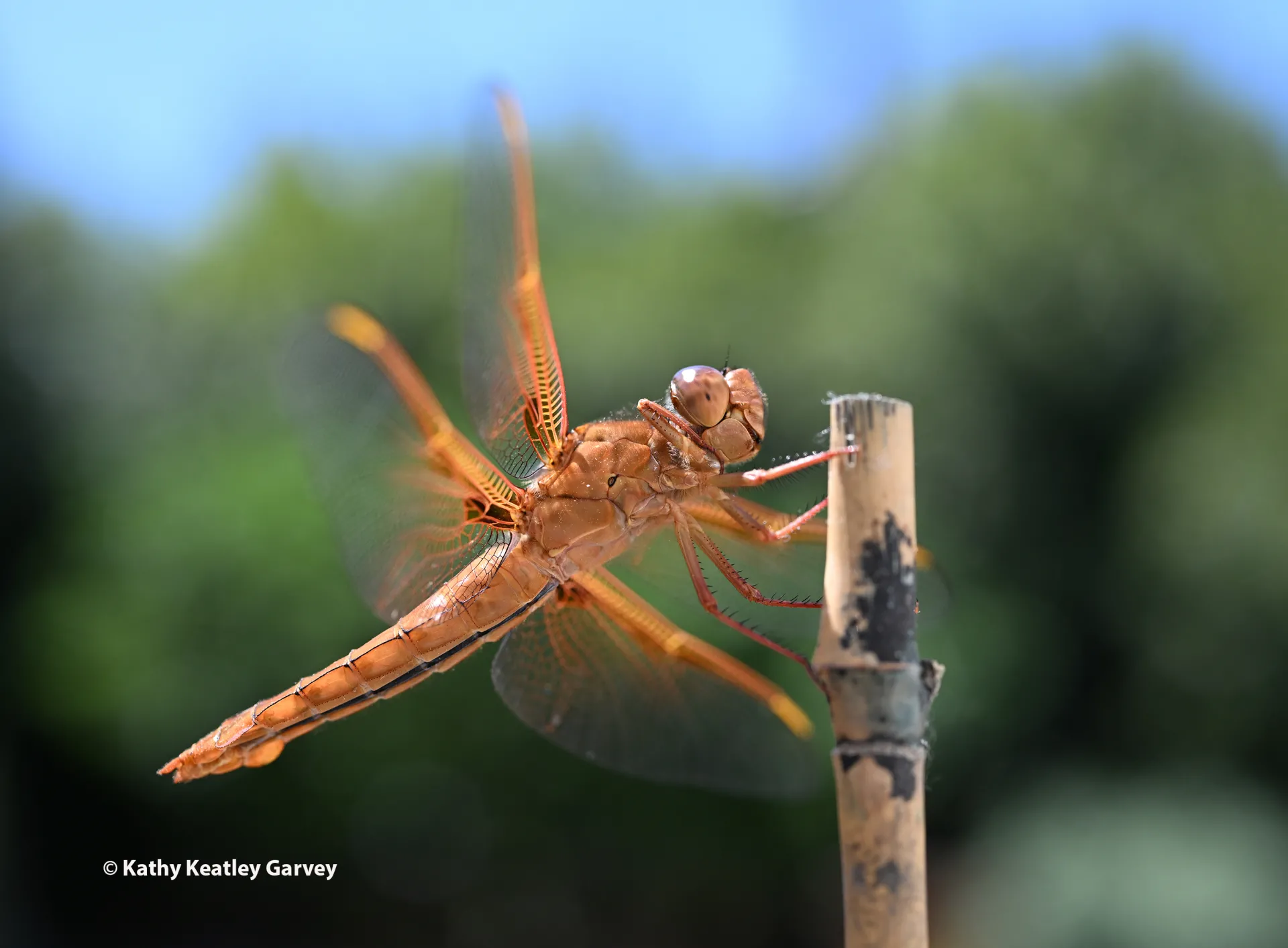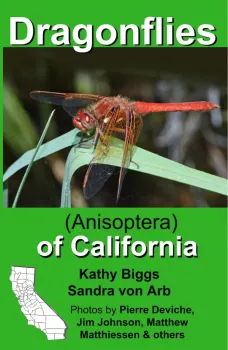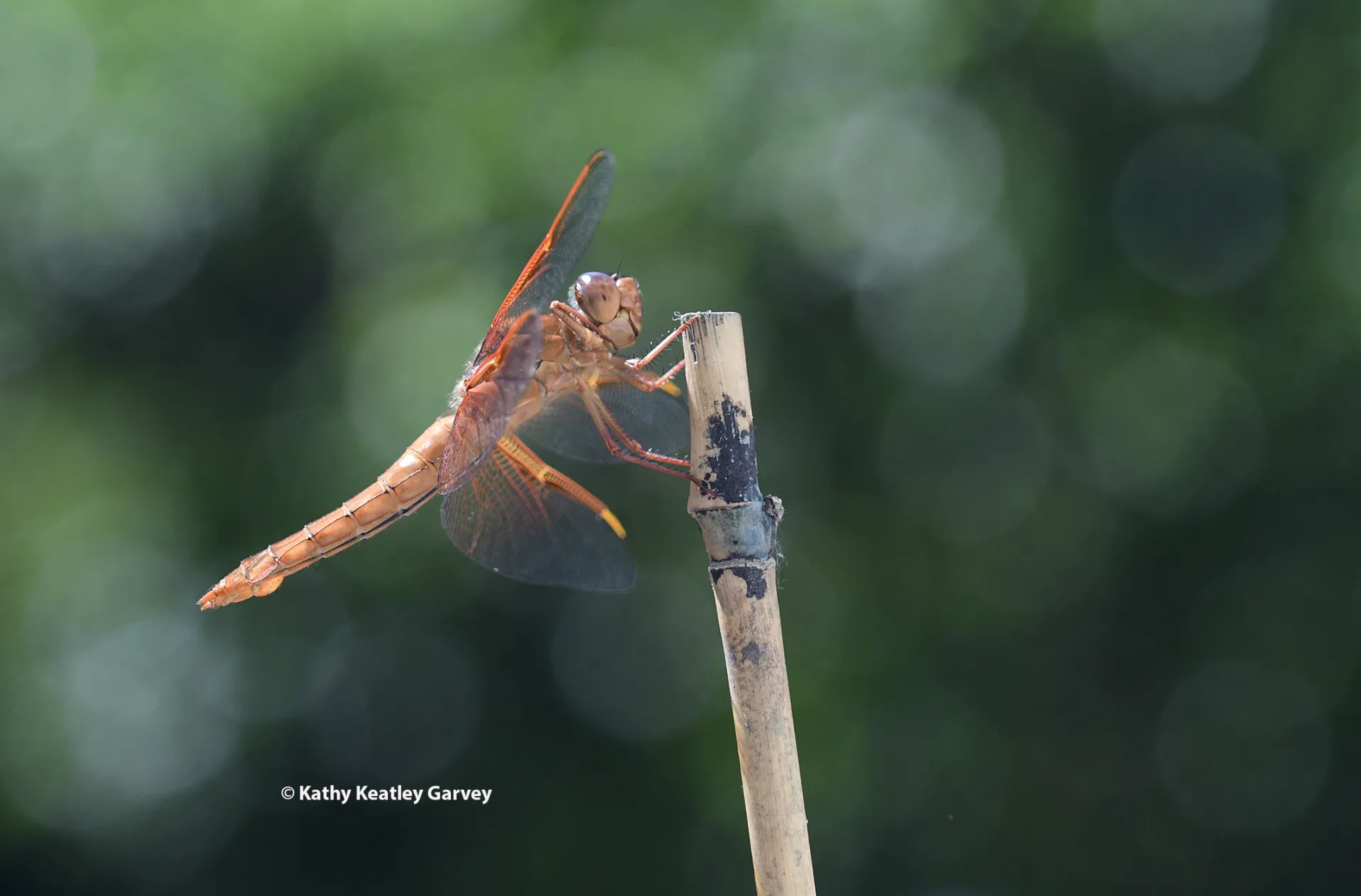Flameskimmers Bring Great Joy
Bug Squad Blog
By Kathy Keatley Garvey
Flameskimmers bring great joy.
Today we saw our first dragonfly of the season in our Vacaville garden. The flameskimmer, a female Libellula saturata, perched on a stick and allowed me to take a few images.
It was just a couple of weeks ago that I reviewed a book for Argia, the Dragonfly Society of the America's quarterly news journal. The book, "Dragonflies (Anisoptera) of California." It's by Kathy Biggs and Sandra von Arb. 2024. BEAR Fdn, Petaluma, Calif., 200 pp. Price $39.95. ISBN 979-8991065405 (spiral bound) available from https://tinyurl.com/CA-Dragonflies; ISBN "979-8991065405 (perfect bound) available from Amazon."

I wrote in part:

"You may never see all the dragonflies in California, but if you want to try, you can identify them, thanks to the newly published guidebook, "Dragonflies (Anisoptera) of California" by Kathy Biggs and Sandra von Arb. It’s an incredible, comprehensive publication that covers all 73 species of Anisoptera in California. Many beginners can identify only the iconic species, the firecracker red flameskimmer (Libellula saturata), and a few others. This book enables you to identify all the species known in the state, both males and females."
"The authors present the most common dragonflies first, grouped within families by similarities in appearance. It’s a book primarily intended for beginners—it’s easy to read and understand, and the 146 images are phenomenal—but it’s also a go-to book for professionals. The authors show a nymph and/or exuvia for each genus. In fact, for each species, the authors explain the habitat, show a distribution map, list flight periods, behaviors, similar species, and oviposition techniques."
"This 200-page work is an excellent guidebook to take into the field. It’s spiral-bound, lays flat, and the comprehensive index is easy to use. The nymph section provides the necessary information to identify the nymph or exuvia to family. There is also a key to identifying the difficult-to-distinguish darners. Line drawings that show wing venation make difficult IDs easier."
I mentioned that "the authors share a passion for dragonflies and it shows. We remember Biggs and von Arb sharing their expertise at a 2015 open house at the Bohart Museum of Entomology, University of California, Davis. Biggs is an experienced dragonfly guide and author. Von Arb is a biologist and founder of the Biodiversity Education and Research Foundation, commonly known as BEAR or BEAR Foundation."
When I spotted the flameskimmer in our garden today, I walked straight toward it, camera ready. I didn't zigzag, stop or crouch. (In their book, the authors also offer tips on how to look for, observe, and photograph an ode. “Line yourself up directly with the insect and then walk straight towards it. They are more likely to fly away if you walk crosswise while near them.”
This one was very cooperative.

